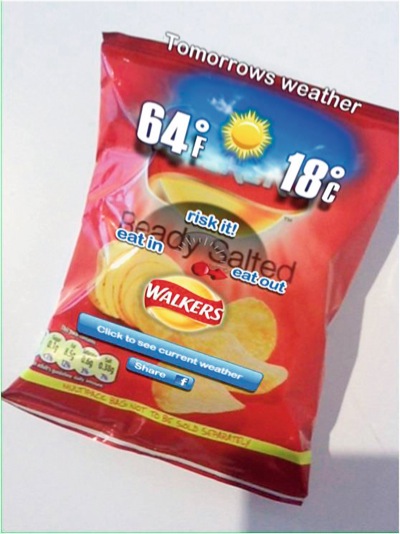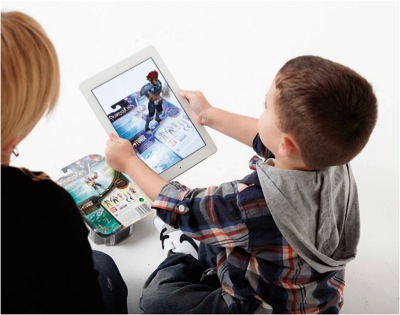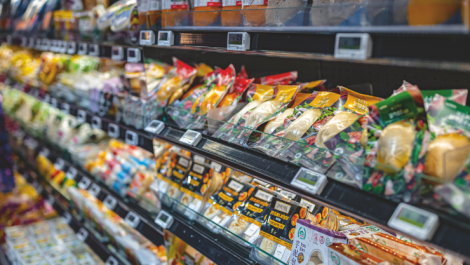Redefining the zero moment of truth online
In the new retail environment, it is no longer enough for packaging to look good enough to eat, consumers now expect a lot more for a lot less, and increasingly they won’t find it in store, reports Des King.
It is not so long ago that former Tesco CEO, Sir Terry Leahy, pronounced that ‘it was the packaging industry that created modern retailing’ – an open-handed acknowledgement of its contribution towards the elevation of the supermarket as universal provider. That’s not to say, however, that the relationship has been all one way. To retain a competitive edge on the shelf, the purpose of packaging has itself been elevated from protective wrapper to frontline sales tool. It is an industry that has morphed from engineering to marketing.
Changing context
Within the current retail context, packaging is mostly designed to portray and elicit the look of love. That first flush, however, soon fades.
Eye-catching cartons and cans, informative labels and smart dispense trays may all be enjoying their day on the shelf right now, but as the context within which they are operating changes, what then?
Hitherto, the weight put by brand owners into generating a positive consumer response has increasingly been concentrated in store, where it is reckoned that with 40,000 different SKUs on display in an average sized supermarket, around 70% of all purchases will be made on impulse and within a decision-forming window of less than 10 seconds. This interaction between pack and purchaser is the all important moment of truth.
To avoid becoming just another clone alone on the shelf, brands have got four-square behind creating the optimum conditions for instant attraction – and banking upon the product’s personality to perform well enough to ensure shoppers come back for more of the same.
The same shift in marketing nous that has marginalised mainstream print and TV advertising in favour of on-pack text and graphics, however, is part and parcel of an evolving process.
Why depend upon a series of individual chance encounters across any number of indiscriminately stocked aisles when you can harness the 24/7 peer pressure that is the fundamental bedrock of most social media networking?
In other words, the savvier brands are now starting to re-establish the ‘zero moment of truth’ on screen and off shelf. This is in the sure knowledge that 2.3 billion prospective consumers (approx. one-third of the world’s population) can be found browsing online at any given time – almost half of them subscribers to YouTube – and have the potential tospend a lot longer than that statutory 10 seconds in formulating their purchasing decisions.
Augmented reality
To update the insight shown by the UK’s one-time highest profile shopkeepers, it may shortly be more accurate to say that ‘it was social media that re-created modern retailing’, and in its wake, modern packaging.
A fifth of all retail sales will be transacted online by 2018, double the present level. At the same time, the number of high street stores will have likewise fallen by 22%. Whilst bricks and mortar shopping habits won’t evaporate overnight, the more we keep taking the tablets, the more consumerism will be informed from the comfort of our own homes. And with greater time in which to form a purchasing opinion and different triggers steering it, the way in which pack performs is likely to take greater precedence in future over how it looks.
Most closely aligned to the social media culture is the ability to interface with a smartphone or a tablet via an on-pack portal to say the brand owner’s website or other designated online destination. At this stage, augmented reality (AR) is not much more than a gimmick for most brands, slapped on to add to the consumer experience by extending the bag in which your crisps come, for example, into a world of games, food nutrition advice and even a weather check. As its potential is better understood, however, its evolution could challenge current perceptions to the role played by packaging within the marketing mix.
Engaging the consumer
Sun Branding Solutions is the latest specialist developer of brand management life cycle solutions to roll out an AR app: SBS Virtual Packaging. Shortly to be available as a free download through the Apple store, this will offer users four different platforms through which to engage not only with the pack and its contents, but also with the brand itself.
These include a ‘product display’ which enables consumers to see pack contents without opening it; ‘social responsibility’ so the consumer can find out more about product and pack provenance; ‘sales promotion’ which outlines any offers or competitions; and ‘entertainment’ which delivers an interactive games element.’We were aware of three key triggers: greater awareness of social media amongst our clients and their customers; the drive to reduce packaging wherever possible in turn limiting the actual canvas we have to work upon; and the need to respond positively to regulation and legislation,’ noted business unit director for Sun Branding Creative, Andy Johnson.
‘The app is activated by the smartphone or tablet recognising a tonal contrast in colours spread across the pack so there’s no major on-cost incurred or intrusion into an established design format. We believe it will help brands engage with shoppers in a practical and pragmatic way.’ The company is not the only front end specialist to extend AR capability from a specific site on-pack to becoming an integral and virtually invisible element within the overall design.
Reproflex3’s Packlinc solution strings together a number of different technologies to create an interactive trigger within the halftone screening that can be read by a suitably app-enabled smartphone. It provides a more direct, indeed personal, interface between brand and consumer than could ever be achieved between shelf and basket – and that has greater ramifications still, suggests joint managing director, Andy Hewitson.
‘This will be the future of packaging, and it is possible that in time the decorative impact of packaging will recede in some way. Companies like Pantone have built a huge business on the back of special and consistent brand colours, but in the future, I believe we’ll see compromises taking place, not in a detrimental way, but so that the packaging will be printed from a fixed colour palette. And there’s none more cost effective than four colour flexo process.’
 Augmented reality adds bite to Walkers Crisps
Augmented reality adds bite to Walkers Crisps
Realise the full potential
So, could brands be freed from the tyranny of obsessive colour management? ‘Not right away,’ said Mr Hewitson, ‘but this is something that the digital print process has kicked off some years ago, and which the traditional print processes will have to follow if they’re going to compete.’
That aside, whichever way AR is developed and delivered it could clearly obviate elements if not a goodly proportion of on-pack text and graphics. Given the cost incurred at the front-end pre-press stage in ensuring colour consistency and brand integrity that sounds like a very attractive proposition to many manufacturers. And if purchasing decisions are increasingly being made online or pre-store, then why not?
Highly unlikely, reckons Mr Johnson, ‘Regardless of whether you buy the product in-store or online – where admittedly how the pack might look is arguably less influential in forming the purchasing decision – once in the home it still has an ongoing part to play in supporting the brand messaging.
I don’t think you can ever really get away from the visual side of pack design, or not in the short to medium term, but I also think that we’ve got to be a lot cuter in the way we portray the brand; it’s simply not just about what’s on pack, there’s more that a customer is going to demand and expect. ‘If going forward it was just a visual cue and that’s it then you’d be missing a trick. It does need the addition of functionality such as AR as well – which actually is helping packaging to realise its full potential rather than just looking pretty on the shelf.’
Considered opinions
Whilst not everyone is switched onto social media – although it’s predicted that in a year’s time over 90% of all mobile phones will be smart devices -the genie is clearly out of the bottle, albeit with not necessarily predictable outcomes, said MMR Research Worldwide associate director, Stergios Bititsios. ‘Yes, it’ll help to facilitate the decision-making process and consumers will be better informed before they enter the store or shop online. Conversely, marketing spend could be redirected away from packaging towards building greater brand awareness online.’ Maybe it is force of habit, but there is tangible reassurance in being able to physically interact with the pack prior to purchase.
Also, that 10 second decision window is questionable, said Mr Bititsios. ‘What we’ve learned from behavioural economics in the context of FMCG and grocery retail is that the amount of time we spend prior to making a decision is very much category dependent viz. there are low and high involvement products. I don’t believe that a consumer will take the same amount of time on buying toothpaste, as they will on buying say a bottle of wine. ‘Some of the received wisdom with regard to shopping in store shouldn’t be taken as cast instone. And in any case, who’s to say that you might not make the wrong decision online by being able to fully experience the pack and what it brings to the brand proposition.’
Whilst Packology managing director, Robert Herridge, agrees that the supply chain has still to get its several heads properly around how social media might be positively embraced, he definitely sees it as an irreversible genuine game changer. ‘Social media is about having a conversation with an exponential number of people; it’s degrees of degrees of degrees of communication. It’s not just going to be just a matter of the brand owner understanding how to use the technology, however, it’ll be the consumer that’s driving it too.
‘It’s also going to finally realise the full potential of the digital print revolution as brands become more and more targeted to individualconsumers rather consumer groups and demographics.’
They know who we are, what we like and where we live – now they know how to engage our undivided attention. Shopping, online and in store, will never be quite the same again.






